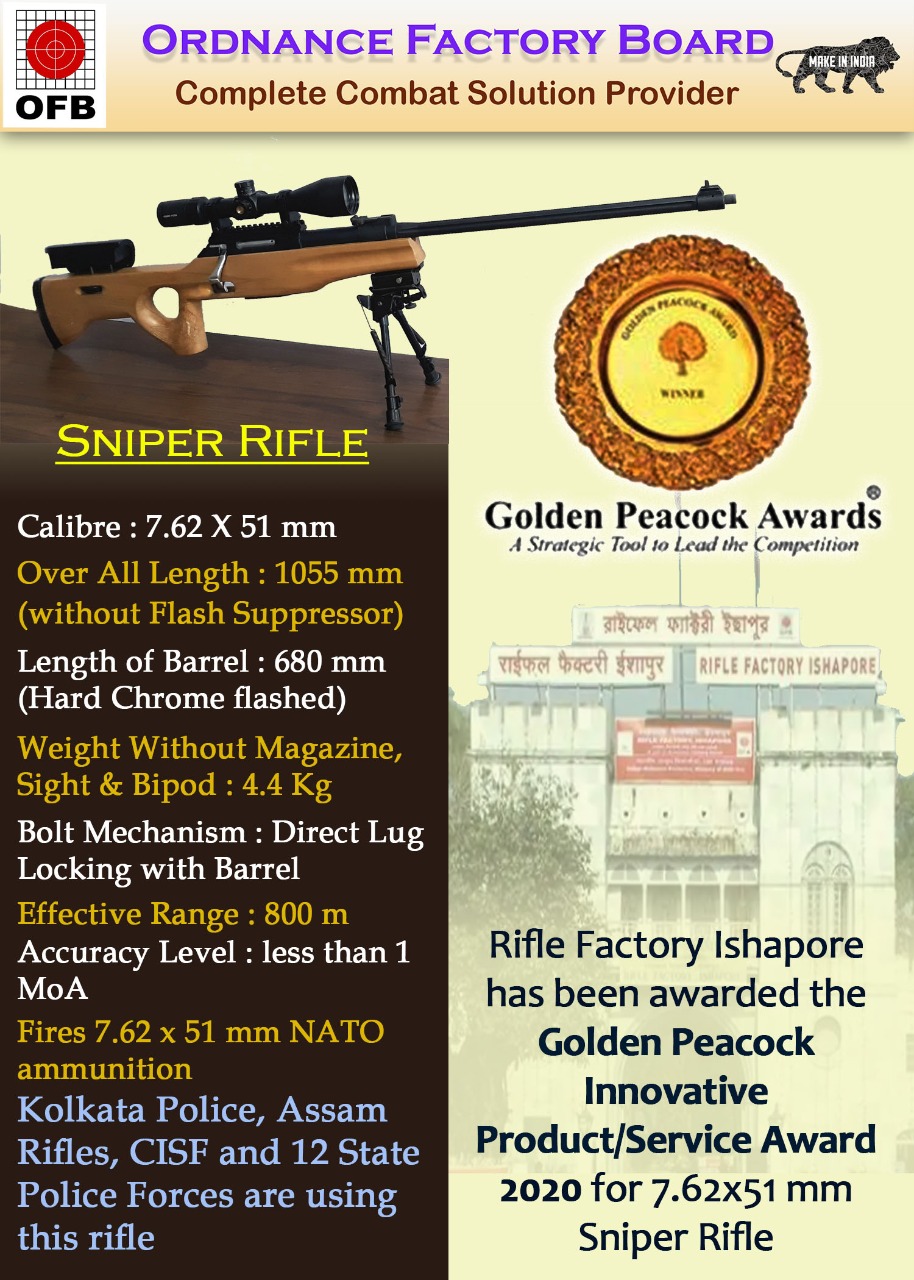WolfPack86
New Member
- Joined
- Oct 20, 2015
- Messages
- 10,571
- Likes
- 16,993

Golden Peacock Award for OFB's Rifle Factory

The bar is extremely low for getting a Golden Peacock award.
Golden Peacock Award for OFB's Rifle Factory
Badhiya chal rahi hai. Makhan
Looks like the simulator from Zen Technologies.Which gun...................View attachment 52364
While not defending the INSAS here but context is important. Looking at the ammo on the ground, they might have been busy firing for hours also many were magazines changes. Some context on rifle reliability here below even for some of the most used modern Rifles operationally. SCAR for example had 226 stoppages among 10 rifles while firing 60000 rounds between them or 6000 rounds each during US Army trials. That's 22 stoppages per Rifle which is 1 stoppage every 272 rounds. Those gunners need the new NG-7 and should be better.this is completely freaking unacceptable. i see double feeds and misfires.
The INSAS reflects on IAs tactics.INSAS LMG was being used way beyond its capability. Its supposed to fire max 1000 rounds in Half hour ie 30 minutes.
In the video clip, it seemed around almost 100-150 rounds were being fired per minute. Magzine was being emptied in single burst without any trigger control.
Even for belt fed GPMG, the training is to fire short burst 4-5 rounds, wait 5 sec and then repeat. Hence 40-80 rounds per minute. Change barrel after 3-5 minutes ie 200-300 rounds. Even at higher intense firing trigger control is maintained.
In the video, I don't think INSAS LMG was jamming, the soldier was too charged up & tense, hence working the charging handle, not able to insert the Magzine properly couple of times
Even then INSAS LMG fired around 300 rounds in 2 minutes in the video & was still firing.
Though a periscope sight alongwith tripod mounted GPMG would have made more sense.
bullets are pouring in from enemy position, that's why he is firing like hell. You can not aim at enemy in this situation.I wonder if the soldier was hitting anything at all by raining full mags at a time.

Golden Peacock Award for OFB's Rifle Factory
The bar is extremely low for getting a Golden Peacock award.
I don't think there is any point in mocking RFI for this.
View attachment 52336
After all they realised how to mount a scope.
Golden Peacock is bit underappreciative; they deserve nothing less than a Golden Dodo.

The INSAS reflects on IAs tactics.
Watch US tactics in Afghanistan and then compare them to the ones U see in India.
The IA has the One bullet one kill rule i.e lay precises shots without wasting a single bullet. This be called precision fire.
The US army on the other hand believes in suppression fire tactics. If they get a rough idea about the position of the enemy they will rain bullets on them. Meanwhile each team has a sniper or at least a marksman.
the Marksman and Sniper lay precise shots on the enemy. They use suppression fire to cover for their enemies who either maneuver towards the enemy or seat themselves in a better position.
This is why US concentrates big on Marksman and sniper training.
If their is no scope for sniper then they blow the whole position with Javeline
Watch this video above.
The soldiers are suppressing the enemies meanwhile his buddy blows up the position with javelin.
The above method is not valid for CT ops in populated area but still I wanted to bring general perspective of tactics under view. Even we do the same in cross border attacks.
The INSAS was tailor made for Indian tactics three round bust fire reflects that.
ARs are made for american tactics with tolerance to high rate of fire per minute.
Even for belt fed GPMG, the training is to fire short burst 4-5 rounds, wait 5 sec and then repeat. Hence 40-80 rounds per minute. Change barrel after 3-5 minutes ie 200-300 rounds. Even at higher intense firing trigger control is maintained.
In the video, I don't think INSAS LMG was jamming, the soldier was too charged up & tense, hence working the charging handle, not able to insert the Magzine properly couple of times
Even then INSAS LMG fired around 300 rounds in 2 minutes in the video & was still firing.
Though a periscope sight alongwith tripod mounted GPMG would have made more sense.
I wonder if the soldier was hitting anything at all by raining full mags at a time.
| Thread starter | Similar threads | Forum | Replies | Date |
|---|---|---|---|---|
|
|
'It's Good': When US Soldiers Fired INSAS Rifle In Joint Military Drill | Indian Army | 1 | |
|
|
Exclusive: Made in India rifles to replace INSAS | Indian Army | 90 | |
|
|
Insas Excalibur 5.56mm Assault Rifle 3d Art | Military Multimedia | 2 | |
|
|
Regarding replacement of INSAS Rifle | Indian Army | 2 |
